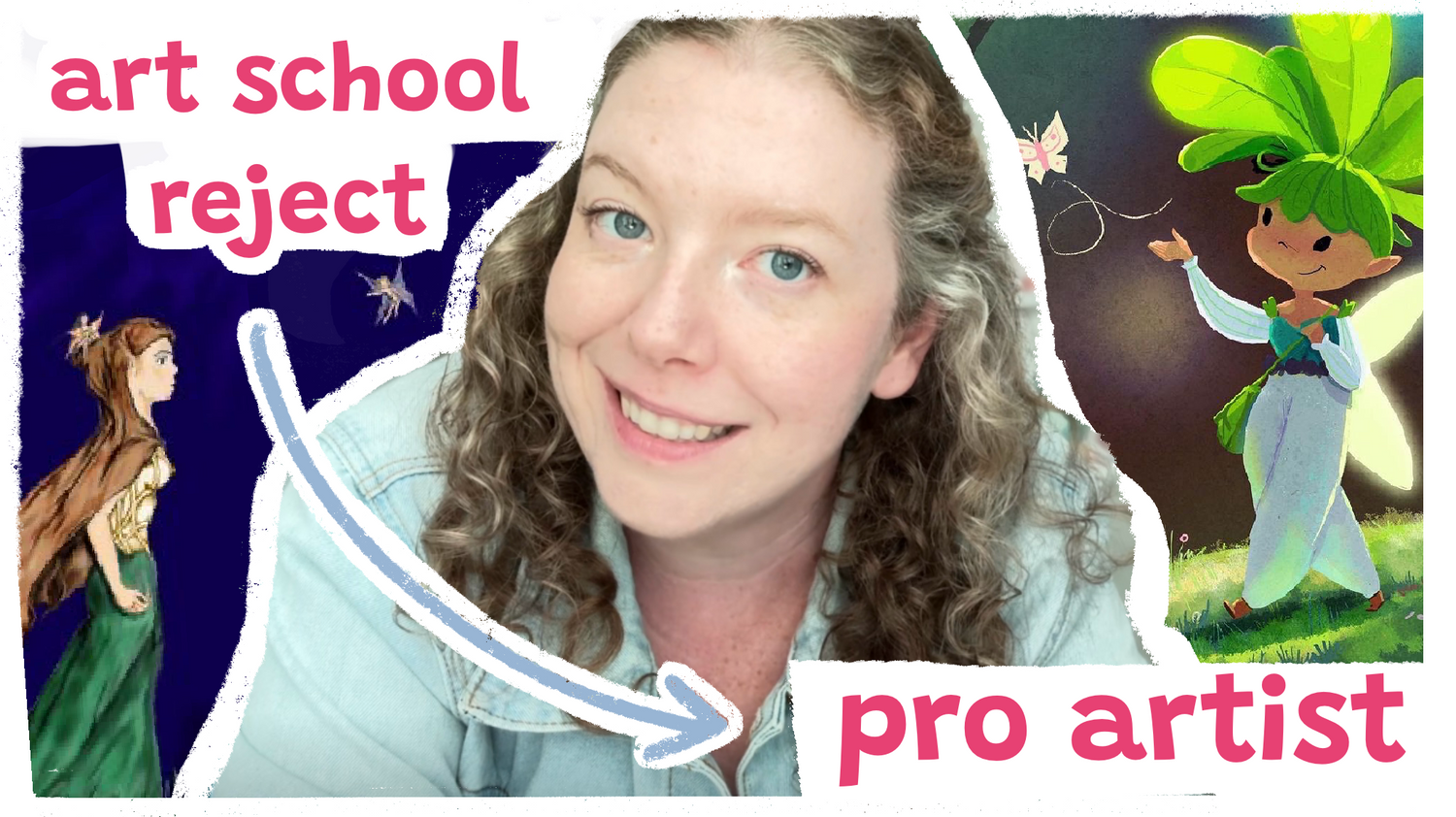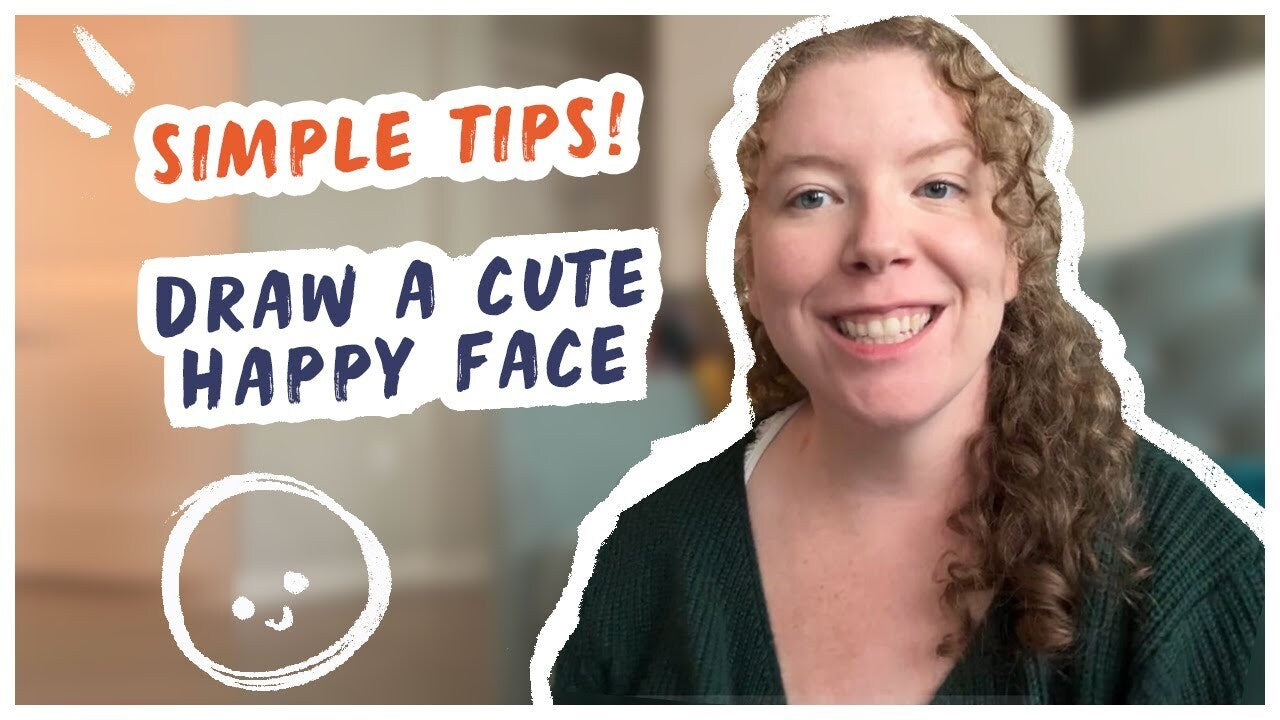Looking to draw cats that are irresistibly adorable? Dogs you can reach out and pat? Or maybe a friendly Yeti you can cuddle through his cold?
Figuring out fur is one of the foundational art skills that will crop up time and time again, especially for those looking to create creature or pet designs. Or, in my case, cozy children’s books.
I know, personally, I struggled with fur for a long time. Accounting for all the complicated angles, tufts, and tricky lighting made me so overwhelmed I struggled to pick up a pen.
With this tutorial, I’m hoping to help ease this process by making it a little less scary. Fur doesn’t need to be complicated! It can be as approachable as the pets you’re drawing.
So, without further ado…here’s everything you need to know about fur!
Step 1: The Base Layer
Like with any artwork, it’s important to start with a simple sketch layer. This initial outline helps define the outer borders of your piece before diving into the fur. If you've followed along with my Doodle of the Week challenge from my newsletter, you'll recognize this process—it's the foundation I always recommend for any type of art.
This stage isn’t just about setting the borders—it’s where you can lock in body language, pose, facial expressions, and any key props, like hats or accessories. If your character will be interacting with background elements, sketch those out too. That way, you’ll know if the fur will overlap or obscure anything later on. This planning step ensures your final design feels cohesive from the start.

Step 2: Block in the Fur
Now it’s time to start adding fur! Just like hair, fur is additive—it adds volume to the areas you’ve already drawn.
Think of it this way: when you wear a wig, it sits on top of your scalp, making your head appear bigger. Fur does the same thing, but for the entire body! That’s why, instead of erasing to create spiky or pointed bits, we add fur on top of the base structure.
If you've checked out my How to Draw Hair book, this process will feel familiar. Here’s how to get started:
- Draw the base (the “skull” layer): We’ve already done this in the sketch layer, where we blocked out the body’s shape and defined the structure.
- Identify where the fur will be rooted: For human characters (or a Yeti, like in my example), hair typically flows from a "part" or a specific point. In fur, the strands may be more evenly spread across the body, but gravity still affects them. Pay attention to where the fur would naturally sag and follow the body’s contours.
- Start with big shapes: Think of the major fur clumps first. It’s similar to drawing large hair sections like the swoop of bangs or chunky curls. For fur, this might be large fluffy sections like the mane of a lion or the puffy tail of a poodle. Block in these big forms to establish volume.
- Vary the size: Once you’ve drawn the larger chunks of fur, start adding smaller details. This is where you carve out individual strands, cowlicks, or finer textures. Varying the size of fur sections creates a more natural, dynamic look.

You can see this process in action with Mr. Yeti!
The root of his fur is mainly towards his upper left. I started by sketching the big, swooping shape of his bangs, letting them flow naturally across his face. The rest of his fur follows gravity, pulling downward since the strands are spread across his entire body. To keep it looking lively, I broke up the larger shapes with small, triangular strokes to represent stray strands and give his fur more texture and character.
Step 3: Coloring Your Fur
Now that we’ve got the shapes and general lineart down, it’s time to start coloring. This is done through a simple process, where we get down to the nitty gritty details and define the texture.
Fur is rarely a single color, even in simple, cell-shade-style works. The best way to give a sense of strands and texture is through a change in value. This can be accomplished in black-and-white just as well as rainbow! It’s simply about creating a difference between the lighter shades and the darker ones.
The steps are super simple!

1: Start with your darkest color: This step is all about creating a solid base, similar to how you'd block in shapes during the sketch phase. Lay down the darkest color as your foundation, which will help you define the fur’s depth and texture later on.
2: Add rough edges for the shortest fur: Using a color slightly lighter than your base, start adding rough, jagged edges where the fur is shorter. This helps create texture and defines the form of the fur, especially around areas like the face or limbs where fur tends to be shorter.
3: Draw long, light strands for the longest fur: For areas where the fur is longer, use even lighter shades. Long strands catch the light more easily, so adding lighter strokes here will create the look of soft, silky fur flowing down. This adds volume and contrast to your piece.
4: Details, details, details!: Now it’s time to bring everything to life! Add little touches that “feel right”—whether it’s subtle highlights where the light hits the hardest, smudges for shadowed areas, or even dots for spots of discoloration or texture. These final details help make the fur look natural and realistic.
Speaking of details…
Step 4: Rendering (And Quick Tips!)
At this stage, your friendly critter should be looking nearly complete, but if there are parts that feel a little off, don’t worry! Here are a few best practices I use to clean up my own art and make fur look natural and full of life:

- Check your spacing: One of the most common issues when fur looks "off" is that the spacing between strands might be too even. When fur is too uniform, it feels stiff and unnatural. To fix this, add variety! Try unevenly spacing out the strands, or introduce some randomness in how the fur clumps together, like in the second row of the tips image.
- Pay attention to highlights: Lighting can make or break the look of fur. If a section feels flat, ask yourself: Is this part catching enough light? In the second and third rows of the example, you can see how much of a difference highlights make. Adding just a few bright strokes to show where the light hits can give your fur a shiny, soft look that feels more alive.
- Uneven shapes = natural shapes: When you're drawing fur, varying the shapes and sizes of clumps is key. Uniform clumps can make fur look artificial. Look at the tips image—you can see how the uneven, jagged shapes on the right create a much more dynamic and natural feel than the even ones on the left.
- Add depth with shading: Use more lines and shadows toward the edges of your fur. This helps create the illusion of depth and thickness, giving your fur more volume. Like in the final row of the tips image, focusing shadows around the fur's curves helps bring everything together and gives your drawing a polished, finished look.
You can see the major difference these little fixes can make here.

Wrapping It All Up
And there you have it! Drawing fur doesn’t have to be a daunting task—once you break it down into manageable steps, it becomes much more approachable (and fun!).
Whether a furry ferret, purr-fect kitty, or rambunctious reindeer’s coat; the principles are the same! Start with a strong base, build up your shapes, then render into perfection.
Remember, fur is all about variety! Uneven spacing, different lengths, and a mix of textures all come together to create something that feels alive and natural. The more you practice, the easier it becomes to add your own style and flair to each piece.
So, go grab your sketchpad (or tablet), try out these tips, and see what fur-tastic creatures you can bring to life!
And if you found this guide helpful, you’d probably love my full How to Draw Hair workbook! This comprehensive e-book includes tutorials, references, and guides on everything from finding your hair’s root to defining lighting for every hair type.
Check it out here!







1 comment
If you ever get the urge to make a second book (or a PDF short like your one on hair), my daughter asked me to ask you to write “How to Draw Adorable Pets.” The section you included in your “How to Draw Adorable” book doesn’t quite have enough details to answer all of her questions. She wants tips on every part of the animal and especially more details on how to draw their faces (snouts and mouths and tongues out especially).
I told her I’d ask you. :)
Thank you for your book—it’s definitely a favorite in our house.